Odhner Model 1
I ended up buying an Odhner Mod. 1 by chance, in Sweden. It came with a (as it turned out not-so-original) wooden base and lid, and had the serial number Nr. 3146. Even more importantly, it conformed to the earlier model of top plate of the Odhner machines, with a copper cartouche at the top reading, in the old orthography using the abandoned cyrillic letter "fita" "Aриѳмометръ в.т.Однеръ", and a separately mounted logo, also in copper. It also uses a different casting for the base plate. The machine had some problems of its own - it was clearly repainted, because the crank was extremely worn, and the top plate hardly so. In addition, the paint on the top plate was so thick that all the detail in the beautiful engravings, including even the rows of numbers, was lost.
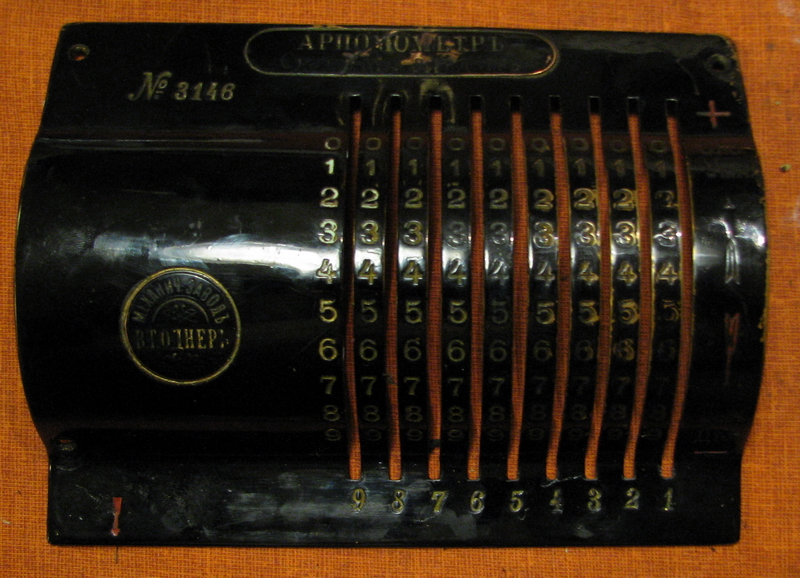
The crank was bent, and I had to bend it back (which is a rather nerve-wracking thing to do ...), the crank rest had a roundel soldered to it for some reason (that could stay, I might file it a bit to make the crank rest easier without having to be fully pulled outwards), the machine was dropped while the top cover was off, and this broke the protection for the back of the carriage clean off, as well as severely bending the top of the left side plate of the machine. This must have happened after the last repaint of the machine, as the black paint was cracked and damaged.

I did decide to scratch some of the thick paint out of the numbers, and get rid of it completely on the beautiful copper roundel and cartouche, to bring out the engraving. The rest of the old repaint, I just kept, as it looks nice enough. I have seen at least one other machine restored like this (with bare copper logos), but I do not know whether it would have been original. Some machines have similar looking cartouches and logos, which are painted black and the engraving seems almost to have been made through the layer of paint - which would be a devil of a thing to do on a curved plate... But then why make these parts in copper - I am also not sure whether all of them showed this feature, or some of them just had a top plate in one piece and completely in brass. It may also have had to do with the fact that copper is easier on the engraving tools than brass. In any case, I left the rest of the paint untouched, cleaned it off the copper inlays, and filled in the engravings with acrylic gold paint, which looks rather authentic in my opinion. Quite pleasingly, the machine came with its wooden box.
Now, for some pictures:
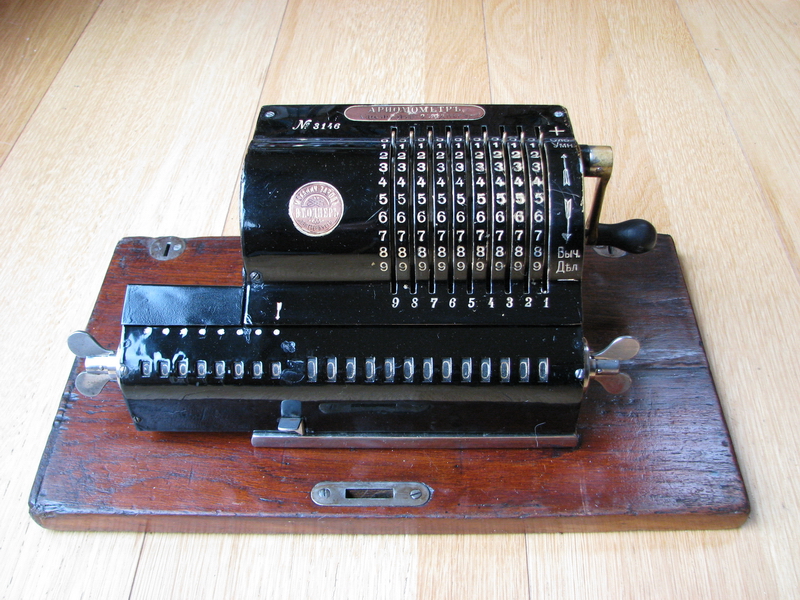





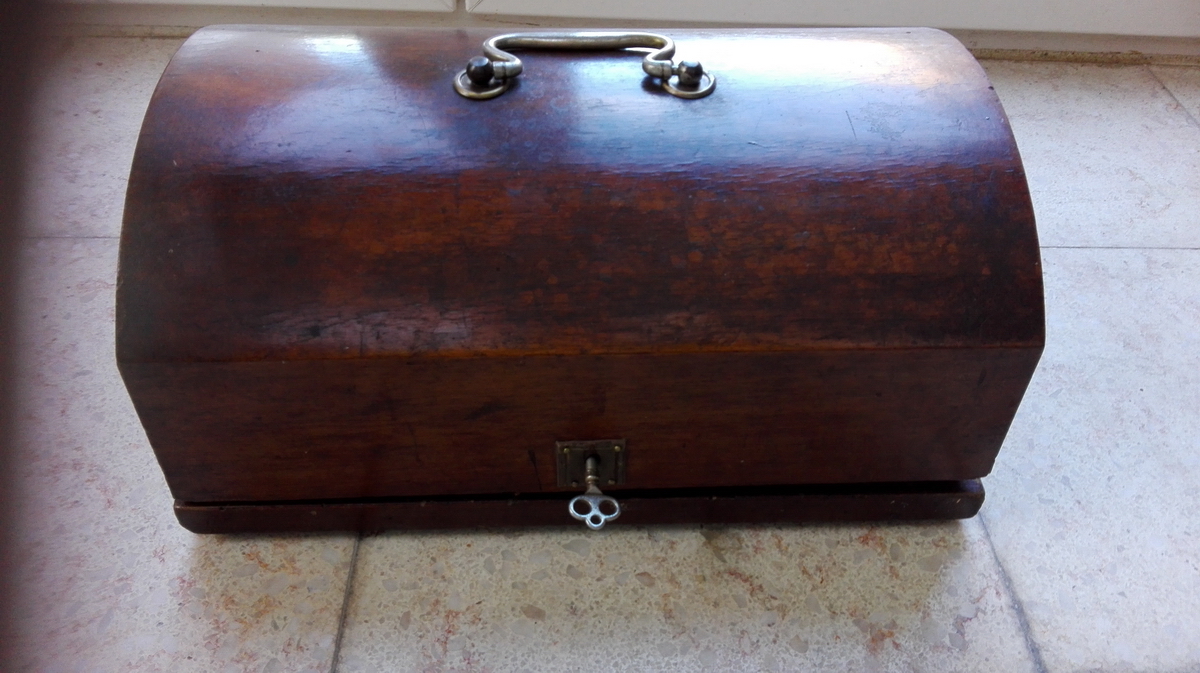
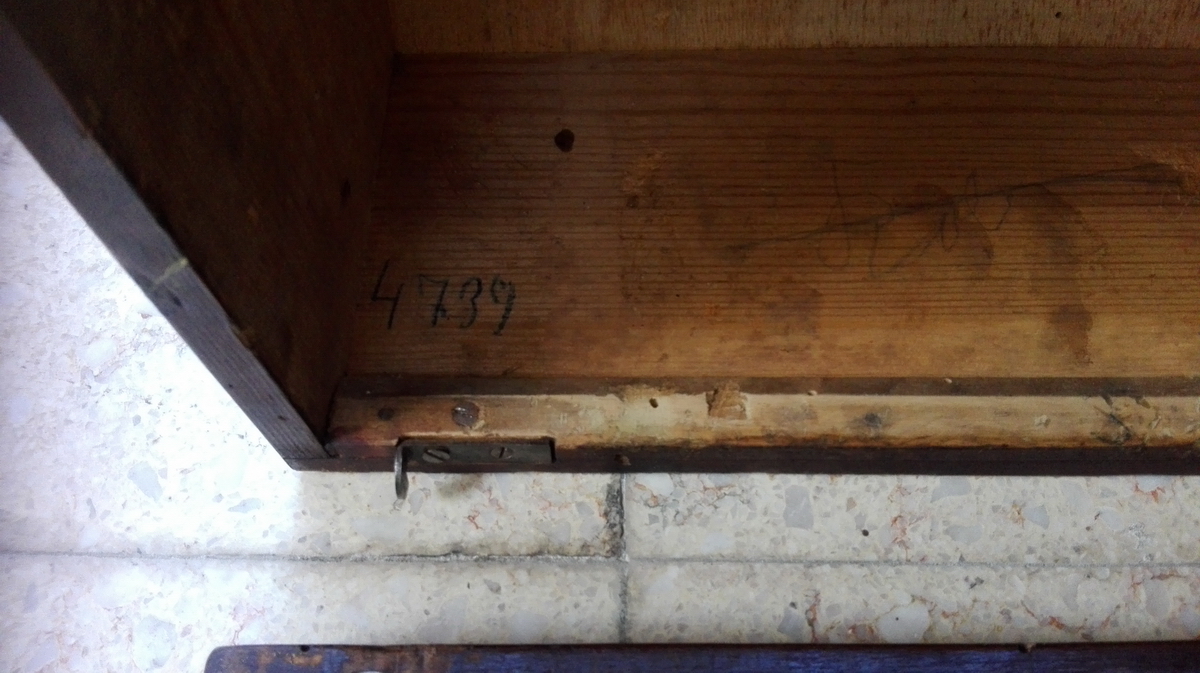
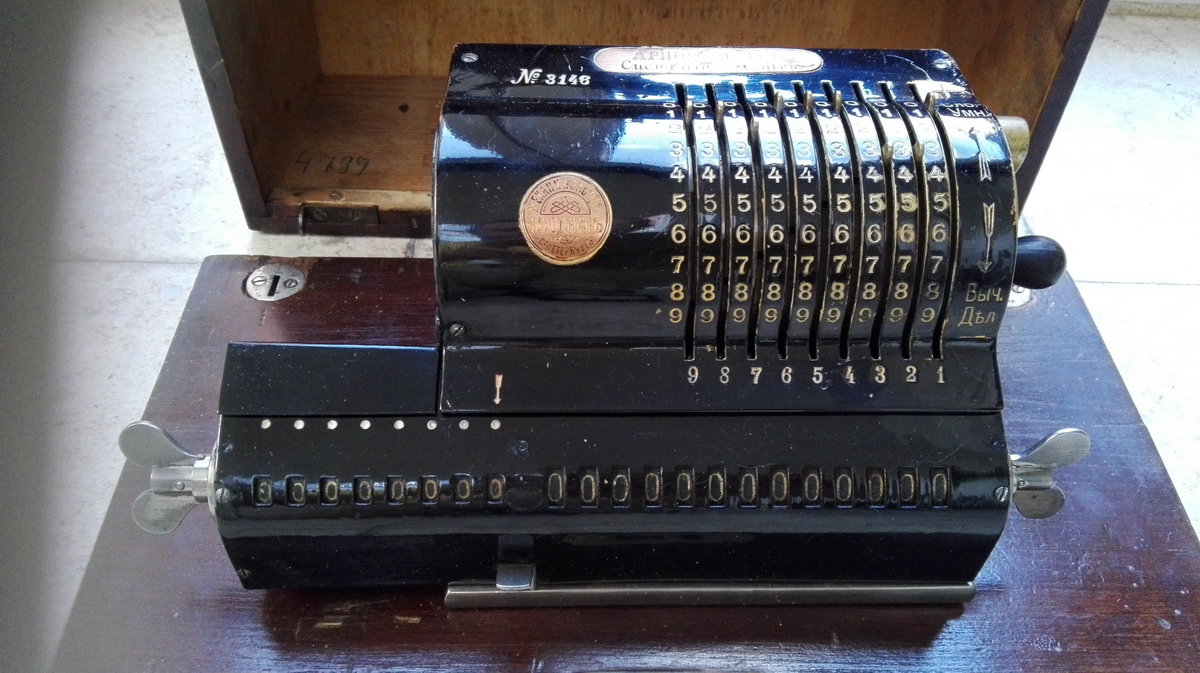







The identifier mark in this case is a 7 with a horizontal small c underneath.
I am especially happy with this machine, because despite being quite late (probably 1900* or so), it is still very much the original form of the Odhner machine, the first commercial pinwheel calculator in the world (we know Frank Baldwin would contest this, but did he ever sell any?).
The missing cover for the back side of the counter register was fashioned by me, and the left side of the machine was repainted. Modeling and cutting:

Fitting:
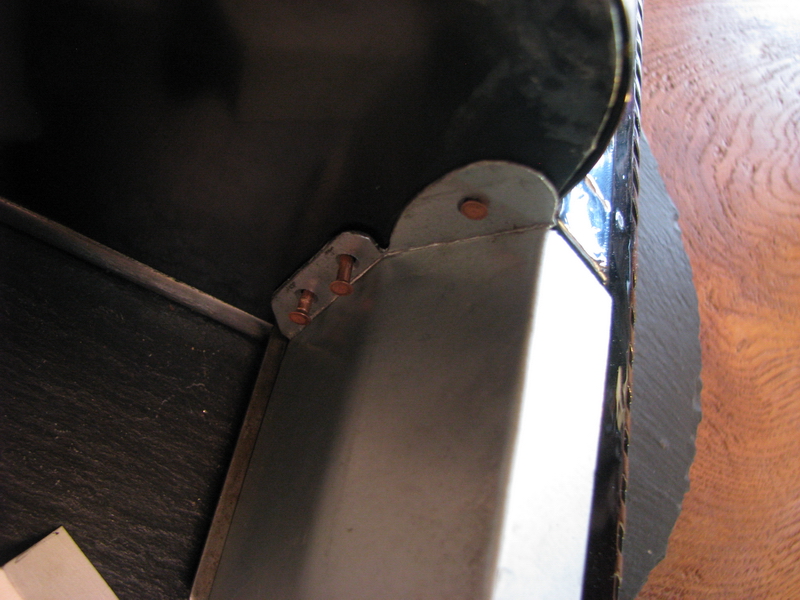
Riveting:

Filling the damage with epoxy, priming and rubbing down to get it looking right:

More priming:

And finally the finished product:


What is also very cool is Timo Leipälä's very careful research on Willgodt Theophil Odhner, published in two articles titled "The life and works of W.T. Odhner", part I and part II. As you probably know by now from reading a number of articles on this website, I have fetish about where machines were made and sold. It turns out that Timo unearthed the address in St. Petersburg where the first European pinwheel calculator factory was located, and consequently where this machine was made. The Odhner mechanical works was located in the Tarakanovskii Pereulok 4 in St. Petersburg. Google maps is not much help here, because the street was renamed in the 1950s - it is now called Pereulok Lodygina (thank you, Timo!!), but still looks out over the chapel of the Expedition. And the factory building ? It is still there! (I really do get a kick out of that sort of thing ...)
*We know that at the Exposition Universelle in Paris in 1900, Odhner still showed a short crank machine (which won a gold medal, whereas Brunsviga, which sensibly already lengthened the cranks in 1894, only received a silver medal ...). Publicity from 1900 mentions 3500 machines sold, but also 5000 machines sold. For this material, see the Rechnerlexikon.
